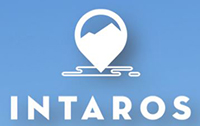The INTAROS roadmap builds on the experience and knowledge from the INTAROS consortium comprising more than 300 scientists from 49 institutions in Europe, Asia, and North America.The roadmap describes the way forward to improve and sustain the observing capacity in the Arctic. The roadmap addresses the full data delivery chains for ocean, atmosphere, and terrestrial in situ observations. The emphasis is on factors strengthening the operational capacity of the observing systems through technological advances, and the role of data systems in developing interoperable systems of systems. Furthermore, the roadmap stresses the importance of cross disciplinary collaboration along the data delivery chain as well as in the data value chain with focus on stakeholder requirements.
To have sustainable in situ observing systems in the Arctic the roadmap points towards the following recommendations:
• It is important that countries with interest and need for sustained Arctic observations work together to provide long-term funding of observing systems to follow up the Joint Statement of Ministers (ASM 2021).
• It is required to strengthen collaboration and coordination between the initiatives, institutions, and organizations to promote funding for sustained observations at national, European, and international level.
• The data delivery chains from in situ observing systems must be operationalised. This requires collaboration between experts from research communities, service and technology providers.
• Mediators between researchers, technology providers, data managers and end users are needed to develop streamlined delivery chains.
• Observing systems must be adapted to evolving priorities, requirements, and technological developments. This requires regular dialogue between local communities, stakeholders in private and public sector, researchers, and service providers.
• It is important to provide competence building in relevant observing methods, technology, and procedures across generation, gender, and generations.
